Subscribe to our ▶️ YouTube channel 🔴 for the latest videos, updates, and tips.
Home | About Us | Contact Us | Privacy | Math Blog
Subtraction of Unlike Fractions
We will learn how to solve subtraction of unlike fractions. In order to subtract unlike fractions first we convert them as like fractions.
To subtract unlike fractions, we first convert them into like fractions. In order to make a common denominator, we find LCM of all the different denominators of given fractions and then make them equivalent fractions with a common denominators.
Let us consider some of the examples of subtracting unlike fractions:
1. Subtract 1/10 from 2/5.
Solution:
2/5 - 1/10
The L.C.M. of the denominators 10 and 5 is 10.
2/5 = (2 × 2)/(5 × 2) = 4/10, (because 10 ÷ 5 = 2)
1/10 = (1 × 1)/(10 × 1) = 1/10, (because 10 ÷ 10 = 1)
Thus, 2/5 - 1/10
= 4/10 - 1/10
= (4 - 1)/10
= 3/10
2. Subtract 38 from 512.
Solution:
Let us find the LCM of denominators 8 and 12. LCM is 24.
38 = 3×38×3 = 924 and
512 = 5×212×2 = 1024
Now, subtract 924 and 1024.
1024 - 924
= 10−924
= 124
Let us illustrate the above example pictorially as shown below.
The whole strip above has 24 equal parts. The fraction 512 is equal to 1024. So the shaded portion represents 1024. We take away 38 or 924 of the above strip. The remaining part represents 124 of the whole strip.
3. Subtract 4/9 from 5/7.
Solution:
5/7 - 4/9
The L.C.M. of the denominators 9 and 7 is 63.
5/7 = (5 × 9)/(7 × 9) = 45/63, (because 63 ÷ 7 = 9)
4/9 = (4 × 7)/(9 × 7) = 28/63, (because 63 ÷ 9 = 7)
Thus, 5/7 - 4/9
= 45/63 - 28/63
= (45 - 28)/63
= 17/63
4. Subtract 5/8 from 1.
Solution:
1 - 5/8
= 1/1 - 5/8
The L.C.M. of the denominators 1 and 8 is 8.
1/1 = (1 × 8)/(1 × 8) = 8/8, (because 8 ÷ 1 = 8)
5/8 = (5 × 1)/(8 × 1) = 5/8, (because 8 ÷ 8 = 1)
Thus, 1/1 - 5/8
= 8/8 - 5/8
= (8 - 5)/8
= 3/8
5. Subtract 19/36 from 23/24.
Solution:
23/24 - 19/36
The L.C.M. of the denominators 24 and 36 is 72.
23/24 = (23 × 3)/(24 × 3) = 69/72, (because 72 ÷ 24 = 3)
19/36 = (19 × 2)/(36 × 2) = 38/72, (because 72 ÷ 36 = 2)
Thus, 23/24 - 19/36
= 69/72 - 38/72
= (69 - 38)/72
= 31/72
6. Subtract 9/35 from 3/7.
Solution:
3/7 - 9/35
The L.C.M. of the denominators 7 and 35 is 35.
3/7 = (3 × 5)/(7 × 5) = 15/35, (because 35 ÷ 7 = 5)
9/35 = (9 × 1)/(35 × 1) = 9/35, (because 35 ÷ 35 = 1)
Thus, 3/7 - 9/35
= 15/35 - 9/35
= (15 - 9)/35
= 6/35
7. Subtract 25 from 7.
Solution:
71 - 25
= 7×5−2×15 LCM of 1 and 5 is 5
= 35−25
= 335
= 635
Hence, 7 - 25 = 635
Note: We write the whole number in the fraction form by keeping 1 in the denominator.
Subtraction of Fractions having the Different Denominator:
|
8. Subtract 23 - 14 23 = 812 [2×43×4 = 812] 14 = 312 [1×34×3 = 312] 23 - 14 = 812 - 312 = 8−312 = 512 |
Method 1: Step I: Find the L.C.M. of the denominators 3 and 4. L.C.M. of 3 and 4 is 12 Step II: Write the equivalent fractions of 23 and 14 with denominator 12. Step III: Subtract Step IV: Write the difference in lowest terms. |
Subtraction of Mixed Numbers:
|
Method I: Subtract 812 - 314 812 - 314 = (8 – 3) + [12 - 14] = 5 + [12 - 14] = 5 + [24 - 14] = 5 + 14 = 514 |
Method II: Subtract 812 - 314 L.C.M. of 4 and 2 is 4. 812 - 314 = 172 - 134 = 344 - 134 = 34−134] = 214 = 514 |
2. What is 145 less than 412?
Find 412 - 145
412 - 145 = 92 - 95 L.C.M. of 2 and 5 is 10.
= 4510 - 1810
= 45−1810
= 2710
= 2710
Questions and Answers on Subtraction of Unlike Fractions:
1. Find the difference:
(i) 38 - 18
(ii) 1723 - 623
(iii) 12 - 316
(iv) 514 - 27
(v) 56 - 34
(vi) 23 - 15
(vii) 5 - 34
(viii) 2 - 1521
(ix) 423 - 2
Answers:
1. (i) 14
(ii) 1123
(iii) 516
(iv) 114
(v) 112
(vi) 715
(vii) 174
(viii) 2721
(ix) 223
2. Subtract the following Unlike Fractions:
(i) 47 - 13
(ii) 34 - 12
(iii) 8 - 23
(iv) 156 - 112
(v) 434 - 12
(vi) 213 - 112
(vii) 1347 - 6
(viii) 725 - 312
(ix) 92 - 4
(x) 25 - 310
Answer:
2. (i) 521
(ii) 14
(iii) 713
(iv) 13
(v) 414
(vi) 56
(vii) 747
(viii) 3910
(ix) 12
(x) 110
● Related Concepts
- Fraction of a Whole Numbers
- Representation of a Fraction
- Equivalent Fractions
- Properties of Equivalent Fractions
- Finding Equivalent Fractions
- Reducing the Equivalent Fractions
- Verification of Equivalent Fractions
- Finding a Fraction of a Whole Number
- Like and Unlike Fractions
- Comparison of Like Fractions
- Comparison of Fractions having the same Numerator
- Comparison of Unlike Fractions
- Fractions in Ascending Order
- Fractions in Descending Order
- Types of Fractions
- Changing Fractions
- Conversion of Fractions into Fractions having Same Denominator
- Conversion of a Fraction into its Smallest and Simplest Form
- Addition of Fractions having the Same Denominator
- Addition of Unlike Fractions
- Addition of Mixed Fractions
- Word Problems on Addition of Mixed Fractions
- Worksheet on Word Problems on Addition of Mixed Fractions
- Subtraction of Fractions having the Same Denominator
- Subtraction of Unlike Fractions
- Subtraction of Mixed Fractions
- Word Problems on Subtraction of Mixed Fractions
- Worksheet on Word Problems on subtraction of Mixed Fractions
- Addition and Subtraction of Fractions on the Fraction Number Line
- Word Problems on Multiplication of Mixed Fractions
- Worksheet on Word Problems on Multiplication of Mixed Fractions
- Multiplying Fractions
- Dividing Fractions
- Word Problems on Division of Mixed Fractions
- Worksheet on Word Problems on Division of Mixed Fractions
From Subtraction of Unlike Fractions to HOME PAGE
Didn't find what you were looking for? Or want to know more information about Math Only Math. Use this Google Search to find what you need.
Recent Articles
-
Successor and Predecessor | Successor of a Whole Number | Predecessor
Jul 29, 25 12:59 AM
The number that comes just before a number is called the predecessor. So, the predecessor of a given number is 1 less than the given number. Successor of a given number is 1 more than the given number… -
Worksheet on Area, Perimeter and Volume | Square, Rectangle, Cube,Cubo
Jul 28, 25 01:52 PM
In this worksheet on area perimeter and volume you will get different types of questions on find the perimeter of a rectangle, find the perimeter of a square, find the area of a rectangle, find the ar… -
Worksheet on Volume of a Cube and Cuboid |The Volume of a RectangleBox
Jul 25, 25 03:15 AM
We will practice the questions given in the worksheet on volume of a cube and cuboid. We know the volume of an object is the amount of space occupied by the object.1. Fill in the blanks: -
Volume of a Cuboid | Volume of Cuboid Formula | How to Find the Volume
Jul 24, 25 03:46 PM
Cuboid is a solid box whose every surface is a rectangle of same area or different areas. A cuboid will have a length, breadth and height. Hence we can conclude that volume is 3 dimensional. To measur… -
Volume of a Cube | How to Calculate the Volume of a Cube? | Examples
Jul 23, 25 11:37 AM
A cube is a solid box whose every surface is a square of same area. Take an empty box with open top in the shape of a cube whose each edge is 2 cm. Now fit cubes of edges 1 cm in it. From the figure i…

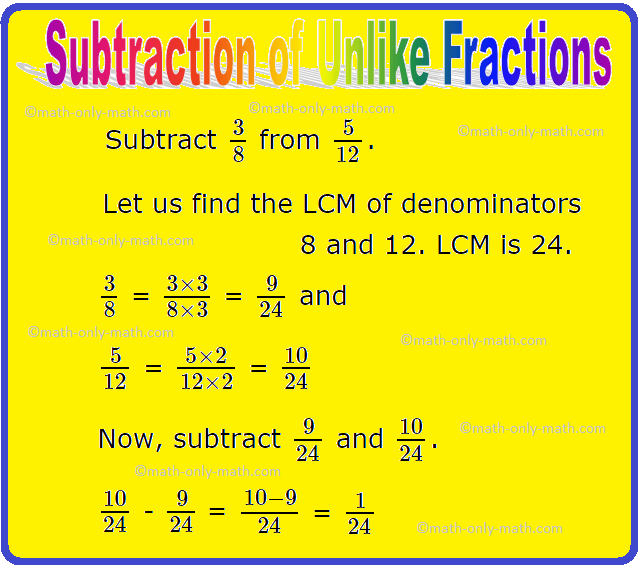
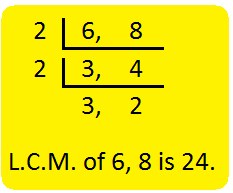

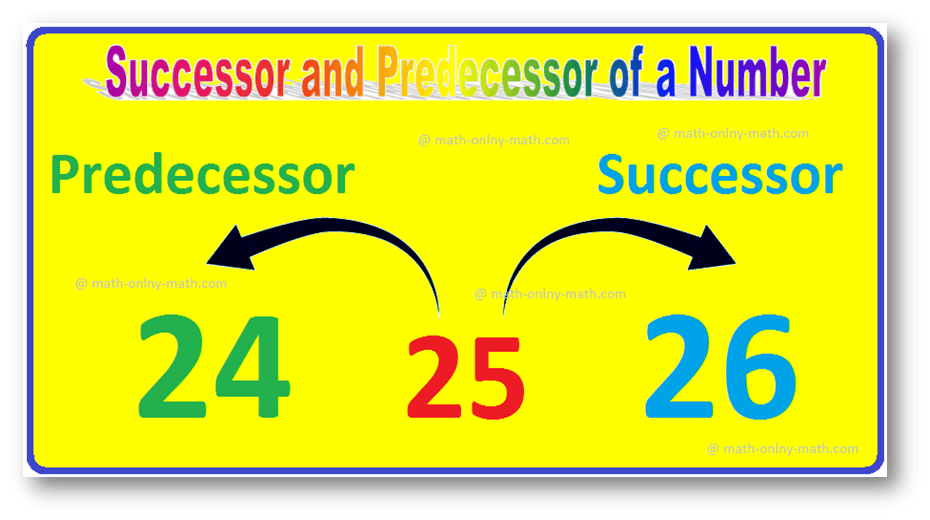


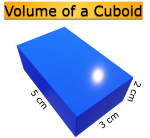
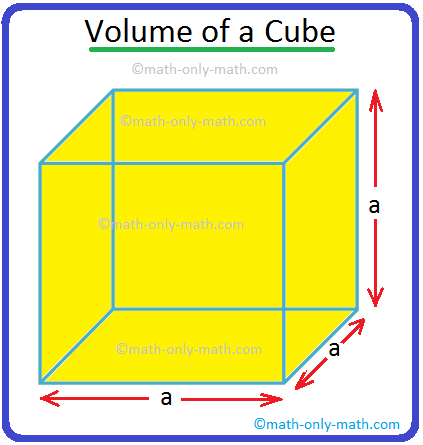
New! Comments
Have your say about what you just read! Leave me a comment in the box below. Ask a Question or Answer a Question.